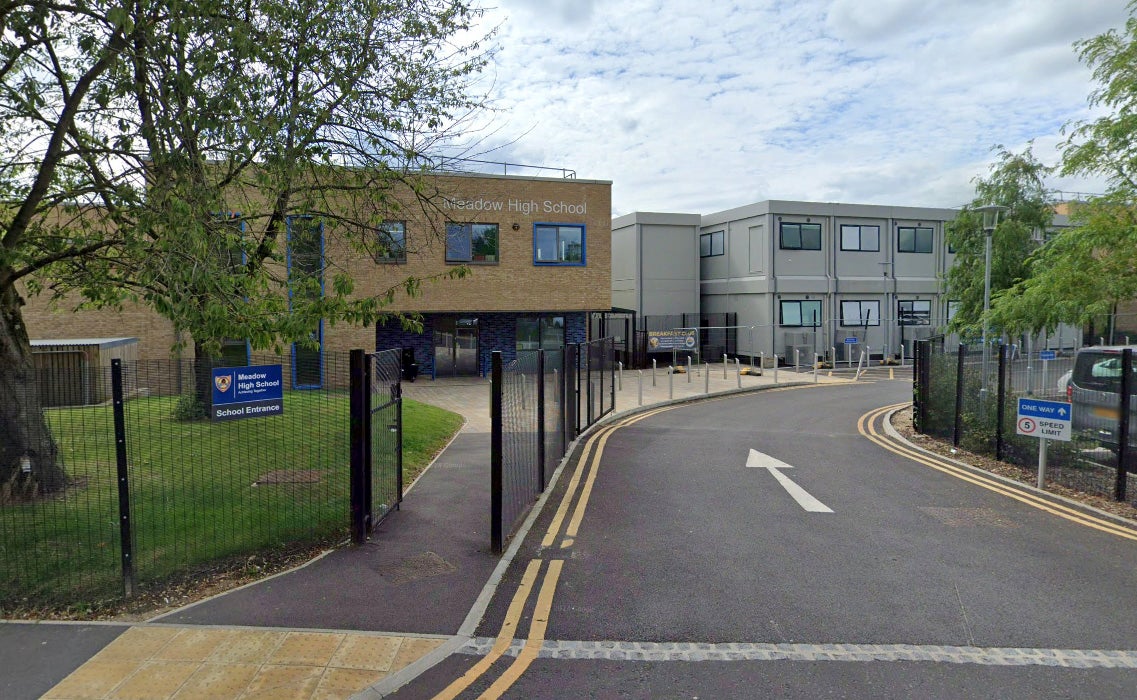Your support helps us to tell the story
From reproductive rights to climate change to Big Tech, The Independent is on the ground when the story is developing. Whether it’s investigating the financials of Elon Musk’s pro-Trump PAC or producing our latest documentary, ‘The A Word’, which shines a light on the American women fighting for reproductive rights, we know how important it is to parse out the facts from the messaging.
At such a critical moment in US history, we need reporters on the ground. Your donation allows us to keep sending journalists to speak to both sides of the story.
The Independent is trusted by Americans across the entire political spectrum. And unlike many other quality news outlets, we choose not to lock Americans out of our reporting and analysis with paywalls. We believe quality journalism should be available to everyone, paid for by those who can afford it.
Your support makes all the difference.
Dozens of schools and prisons around England and Wales face higher bills and delays to new buildings worth billions of pounds after the collapse of one of the UK’s biggest contractors.
ISG, the sixth-biggest builder in the UK, collapsed in September, leaving 2,200 workers immediately redundant and plenty of subcontractors out of pocket. At least one firm working for ISG has gone under.
Its contracts included schools from Exeter to London, as well as four new prisons and prison upgrades from Dorset to Liverpool.
The collapse could not come at a worse time as the government aims to solve the prison overcrowding crisis and gear up school building to combat the concrete crisis.
And on top of that, it suggests no lessons have been learned since the collapse of Carillion, another massive builder, according to industry insiders. Builders are still under-bidding in an effort to grow, and expect their suppliers to shoulder the burden. Also affected are the company’s suppliers; it collapsed owing £981m to creditors including suppliers, according to the Sunday Times.
ISG had about £2.5bn of work in progress at 57 sites with £1.7bn or work in the pipeline including £518m of work with the Ministry of Defence, according to Tussell, which analyses government contracts. It was also contracted to build four prisons for about £300m and about a dozen schools for about £1.2bn of government contracts.
One of its contracts was to build an entire new school for Bishop’s Stortford High School, a local authority senior school in Hertfordshire with 1,250 pupils.
Headmaster Dale Reeve said that he only received a tipoff of the collapse the day before the news broke, when ISG workers were finishing their last day’s work on the site.
The aftermath has been “hugely stressful”, he said. The school is more than 80 per cent complete, but he is still waiting to be able to use the sports hall and much of the car park.
“ISG left a number of subcontractors unpaid, which making it hard for us to find people to complete the project,” he said.
The local authority oversees the project, meaning money is not a direct worry for him, but he does not know when the school will be finished.

The council is “working hard”, he said, however: “I want the school completed as quickly as possible. And they don’t want to spend more money than is necessary, which is totally understandable.”
ISG started off in 1989 as an interior fitter, spun out of builder Stanhope. It was floated on the London Stock Exchange in 1997 as Interior Services Group, with most of its business in fitting offices in growing central London.
It then started buying up its competitors. In 2016, it was taken private by US firm Cathexis, which is owned by Texan billionaire William Harrison. Mr Harrison also owned a slice of Britishvolt, the defunct British start-up which wanted to make batteries for electric cars. ISG was to lead construction of the project. It reportedly did not lose money on the gigafactory’s collapse.
ISG management blamed loss-making contracts it picked up in the runup to covid lockdowns for its ultimate end.
For some in the industry, ISG’s demise is reminiscent of the end of Carillion, another large contractor which went bust six years ago, putting 3,000 out of work and 450 public sector projects on hold.

Carillion was the second-biggest builder and left behind £7bn of debts, including money owed to suppliers.
Head of Policy and Market Insights at the National Federation of Builders, Rico Wojtulewicz said Carillion’s collapse is “not a one off, because we’re not entirely convinced that the largest contractors aren’t still effectively funding their businesses by paying late and having loss-leading projects being paid off by other projects.
“We think that’s still going on and obviously that was the big problem with Carillion and it seems to be a bit of a problem again with ISG.”
Top contractors often farm out work and can be late in paying their contractors. While there is an industry code over prompt payments, it is sometimes ignored, he said.

A bigger problem is customers, be they the government or private developers, choosing the cheapest offer.
“If you speak to many contractors, they often say, I don’t understand how this person won that contract. They’re never gonna be able to deliver it,” he said
Contractors including Carillion would win by making low bids, reasoning that for some contracts the publicity would make the loss-making work worthwhile.
Developers were meant to be avoiding the cheapest bid by applying the Most Economically Advantageous Tender (MEAT) method, which was introduced a decade ago by the EU and listed price as just one criteria to be judged.
Since then there have been efforts to reform it further still since customers have still been using price as the primary metric, leading to price wars and bust contractors.
When builders do go bust, the cost overruns can be gigantic.
The Royal Liverpool Hospital and Midland Metropolitan Hospital’ costs soared. The Royal Liverpool was meant to open in 2017 and cost £335, but structural flaws were found by the contractor which took over the work and costs ballooned. It opened five years later at a cost of £1bn.
More than 200 schools in the UK are partly made of crumbling concrete known as Raac, or reinforced autoclaved aerated concrete. They will need parts of their buildings replacing and the disappearance of a big contractor capable of doing it will push up costs and timeframes for schools.
Ed Griffiths, an analyst at Barbour ABI, said “you could argue that nothing seems to have been learned from Carillion, compared to today.”
But a more immediate problem is the human misery caused by ISG’s collapse.
“There are people, scaffolders in the Northwest left holding the bag with half a million pounds on their books who are just sat there, waiting to hear, are we going to be paid? What are the administrators going to decide?
“It is substantial, the impact of this that it will have on the industry, hundreds of millions of pounds in debt that isn’t that possibly isn’t going to be settled.”
The Department for Education declined to comment. A Ministry of Justice spokesperson said: “We have robust contingency plans in place to mitigate the impact on our prison and court estate of ISG going into administration.
“We are working with administrators and will find alternative ways to deliver these projects where necessary.”
ISG administrators EY said: “As the business has ceased to trade, regrettably the majority of [2,400] roles will be made redundant with immediate effect. Approximately 200 employees will initially be retained to assist the Administrators in winding down the business.”


